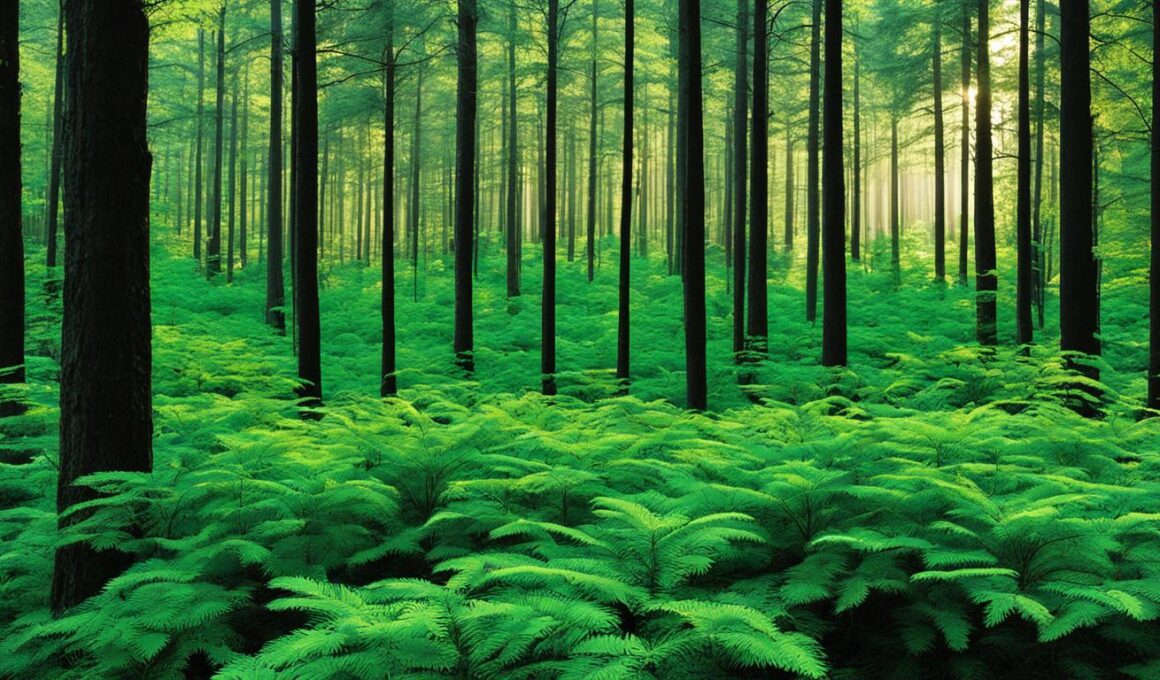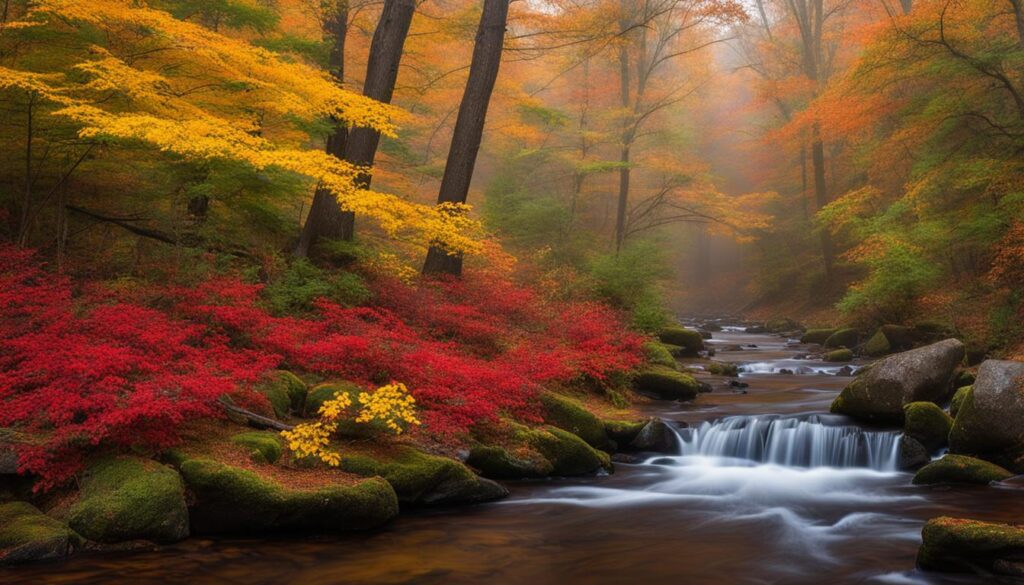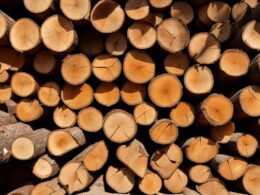Welcome to our article series on the native trees of Wisconsin! If you’re interested in landscaping, conservation, or simply appreciating the natural beauty of the state, you’re in the right place. In this series, we will explore the diverse range of tree species that call Wisconsin home, showcasing their unique characteristics and benefits for the environment.
Wisconsin is known for its lush landscapes and breathtaking forests, and native trees play a crucial role in maintaining the state’s ecological balance. By understanding the various tree species that are native to Wisconsin, you can make informed decisions when it comes to planting, preserving, and caring for trees in your area.
Throughout this series, we will delve into both coniferous and deciduous tree species that are native to Wisconsin. Coniferous trees, also known as evergreens, provide year-round greenery and shelter for wildlife, while deciduous trees boast vibrant displays of fall colors.
Let’s start by exploring some of the notable native tree species in Wisconsin:
From majestic oaks to vibrant maples, Wisconsin native trees offer a wealth of beauty and ecological value. In the next sections, we will delve into the specific coniferous and deciduous species that thrive in Wisconsin’s unique climate. So, whether you’re a nature enthusiast, homeowner, or landscaper, get ready to discover the wonders of Wisconsin’s native trees!
Wisconsin Native Conifers
Wisconsin is home to several native coniferous tree species, also known as evergreens. These trees retain their green foliage all year round, providing year-round beauty and shelter for wildlife.
Native conifers in Wisconsin include the Balsam Fir, which is fragrant and attracts game birds, moose, and porcupines, and the White Spruce, a fast-growing evergreen that provides habitat for birds, squirrels, and chipmunks. Other native conifers such as the Red Pine and White Pine are valued for their fast growth and provide food and shelter for a variety of wildlife species.
These coniferous trees add beauty and biodiversity to the Wisconsin landscape. Whether you’re exploring the state’s forests or creating a wildlife-friendly garden, consider incorporating native conifers to enhance the natural environment and provide a home for local fauna.
Wisconsin Native Deciduous Trees
Wisconsin is also home to a wide range of native deciduous tree species, also known as hardwoods. These trees lose their leaves seasonally, creating a stunning display of fall colors.
Native deciduous trees in Wisconsin include the Yellow Birch, known for its golden fall foliage and peeling bark, and the Paper Birch, with its distinctive white papery bark and golden leaves in autumn. Other notable deciduous trees include the Red Oak, with its red-brown fall color and fast growth rate, and the Hackberry, a tolerant tree that thrives in urban settings and provides food and shelter for wildlife. Wisconsin’s deciduous trees offer a range of beauty, ecological benefits, and wildlife habitat.
These native trees not only enhance the visual appeal of Wisconsin’s landscapes but also contribute to the overall health of the ecosystem. They provide shade, prevent soil erosion, and support a diverse range of wildlife. By planting and preserving native deciduous trees, you can enjoy their beauty while making a positive impact on the environment.
Conclusion
Wisconsin is home to a diverse array of native tree species that contribute to the state’s natural beauty and ecological well-being. These trees, such as majestic oaks and vibrant maples, not only provide shade and visual appeal, but also play a crucial role in sustaining wildlife populations and enhancing air and water quality. By actively planting and conserving native trees, we can ensure a thriving ecosystem for future generations to enjoy.
Whether you are a homeowner, landscaper, or nature enthusiast, incorporating native trees into your surroundings is a wonderful way to appreciate their beauty while supporting Wisconsin’s unique biodiversity. Native trees are well-adapted to the local climate and soils, making them more resilient and requiring less maintenance.
By choosing native trees, you are contributing to the preservation of Wisconsin’s natural heritage and promoting a healthier environment. These trees serve as habitats for birds, squirrels, and other wildlife, as well as offering important food sources. Additionally, their roots help prevent erosion and filter pollutants from water, promoting cleaner streams and rivers.
Let us embrace the beauty and benefits of Wisconsin’s native trees. By planting and nurturing them, we can ensure a greener and more sustainable future for our state, while experiencing the wonders of nature right in our own backyard. Together, let’s celebrate and protect the remarkable native trees that make Wisconsin truly remarkable.
Are Native Trees in Illinois Similar to Those in Wisconsin?
When comparing Illinois native trees to those in Wisconsin, a fascinating discovery is made. While both states share some common native tree species, such as oak and maple, there are also distinct differences. The diversity and beauty of Illinois native trees is truly a remarkable discovery for nature enthusiasts.










